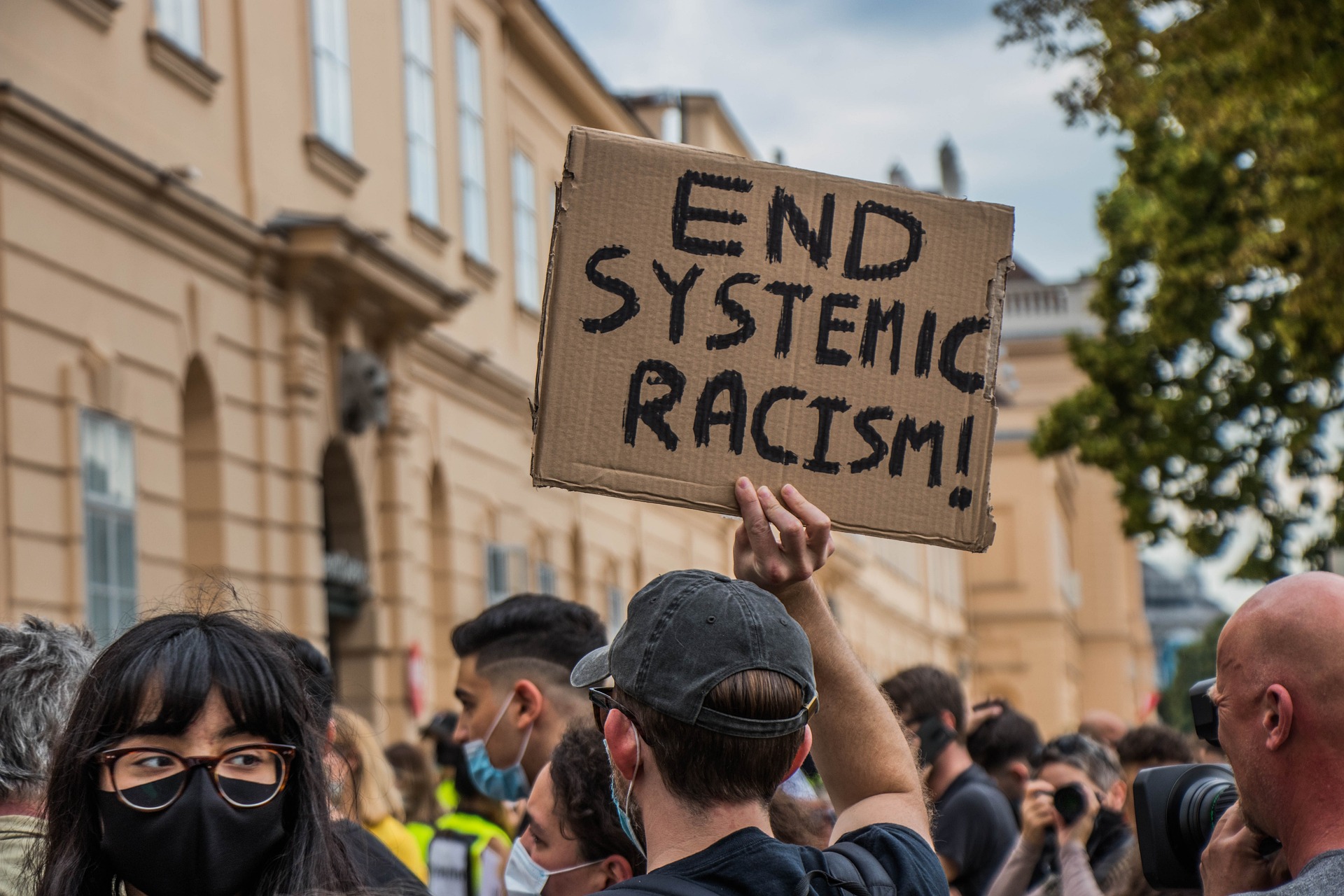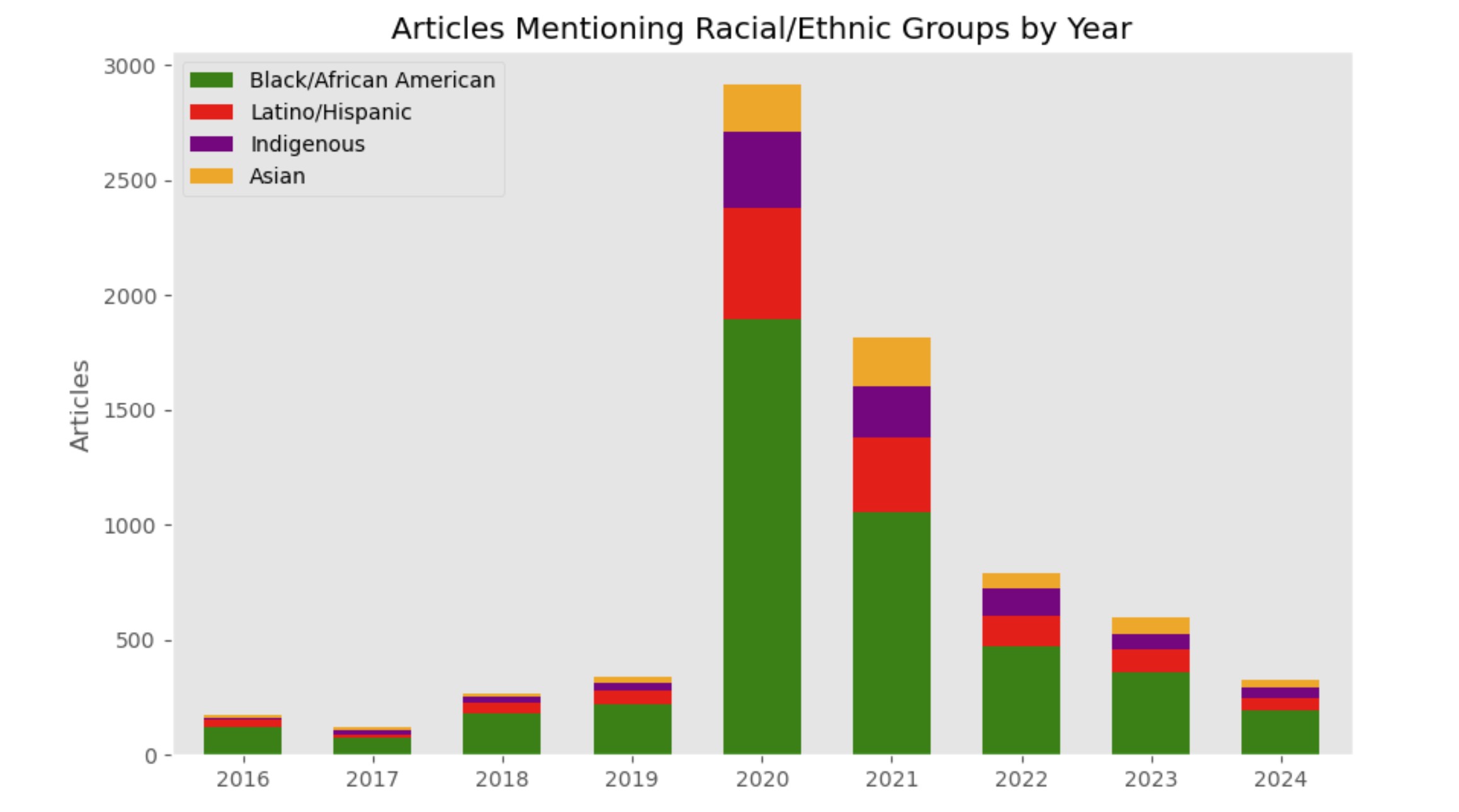Has Systemic Racism Had Its Day?
The rise and fall of coverage in US newspapers

In 2020, the use of terms such as “systemic racism,” “institutional racism,” and “structural racism” exploded in the US media landscape as the country confronted the murder of George Floyd and the rise of the Black Lives Matter (BLM) movement. By June 2020, Merriam-Webster had expanded the definition of “racism” to include racial discrimination ingrained into political and social systems. In this moment of national racial reckoning, it seemed like “systemic racism” had secured itself in the country’s media discourse. How much staying power has this term had in the five years since Floyd’s murder?
To answer this question, and to put it into a longer historical perspective, I examined 6,272 articles featuring “systemic racism” (and variations such as “institutional racism” and “structural racism”) published in The New York Times, The Wall Street Journal, The Washington Post, and USA Today from 1980 to 2024. Analyzing how these phrases were used with regard to different racial/ethnic groups and the tone of the articles over this extended period, I found that the events of 2020 surprisingly had little to no durable legacy on the use of “systemic racism” in US newspapers.
From their first uses, terms like “systemic racism” represented ingrained forms of discrimination throughout societal institutions, including policing, healthcare, and education. At their core, they centered on the American racial dynamic between Black communities and White structures. “Institutional racism” was first defined in 1967 by civil rights leaders Stokely Carmichael and Charles V. Hamilton. Their book Black Power: The Politics of Liberation in America described it as embedded “in the operation of established and respected forces in the society,” especially in “acts by the total white community against the black community.”
Historically, “systemic racism” has been used less in coverage about other racial or ethnic groups compared to Black Americans. When used for Latino/Hispanic, Indigenous, and Asian communities, the term often referred only to specific, isolated events. For example, in 1988, a cohort of Hispanic FBI agents filed a class-action suit against the agency for accounts of discrimination, citing “systemic racism within the bureau.” While articles like this appeared sporadically, the articles mentioning “systemic racism” for Latino/Hispanic, Indigenous, or Asian never approached the same number of articles mentioning Black Americans.
With the increased coverage on race and the BLM movement, mentions of “systemic racism” in articles about all four racial and ethnic groups (Black/African American, Latino/Hispanic, Indigenous, and Asian) increased dramatically in 2020. For example, “institutionalized racism” was used to describe discrimination against Asians during the COVID-19 pandemic. If we stop the timeline in 2020, it would look as if “systemic racism” had broken through as a permanent feature of public discourse.

However, the following years show that what seemed to be a definitive turning point was not one at all. In fact, comparing the use of “systemic racism” in 2024 to 2019 shows little difference in both the number of articles and to which groups it was applied. This similarity suggests that the media’s coverage in 2020-2023 was the beginning and end of the term’s time in the cultural zeitgeist.
Looking beyond the raw number of articles, past examples from 1988 (Hispanics and the FBI) and 2021 (Asians and COVID) suggest that “systemic racism” was used to identify a social problem that needed solving. Even if the prevalence of “systemic racism” in the media has waned in recent years, was there any notable change in how the term was applied?
A close reading of a range of articles from 2019 to 2024 indicates very little change. If anything, there were more instances of a critique of the term in later years (2022-2024). For example, New York Times opinion writer John McWhorter criticized the broad use of “systemic racism,” stating, “I am simply seeking a clearer and less unnecessarily loaded way of talking about racism and how we actually help people in a society riddled with inequality. Calling inequities between races ‘systemic racism’ and the like gets in the way of that.” The term would also be a polarizing topic leading up to the 2024 election when Republican presidential candidate Nikki Haley denied the existence of systemic racism in the US.
While there was some criticism, the fundamental use of “systemic racism” in the media mostly remained unchanged between 2019 and 2024. And given its precipitous decline in coverage, New York Times columnist Ezra Klein even warned in late 2024, “I’m more worried now about people forgetting that systemic racism is a real thing that we need to think about in policymaking than about it being overly big in policymaking.”
While concepts such as Diversity, Equity, and Inclusion (DEI) face increased media attention and polarization, the history of the use of “systemic racism” tells a different story. Ultimately, the term faded in the mainstream media after 2020 and even faced sporadic criticism. The journey of “systemic racism” in US newspapers showcases that, despite the rampant polarization and media attention directed at race-related terms, some potentially controversial concepts fly under the radar even in our highly divisive era.
—Andy Cao
Methodological note: I examined all 6,272 articles featuring “systemic racism,” “institutional racism,” “structural racism,” and other close variations published in The New York Times, The Wall Street Journal, The Washington Post, and USA Today from January 1, 1980 to December 31, 2024. Some newspapers were not available in our databases until the late 1980s. Within those articles, I searched for mentions of terms related to four racial/ethnic groups: Black (Black, African American), Latino/Hispanic, Indigenous (American Indian, Native American), and Asian. For additional information regarding our methods, see here. Photo credit: United Way of the National Capital Area